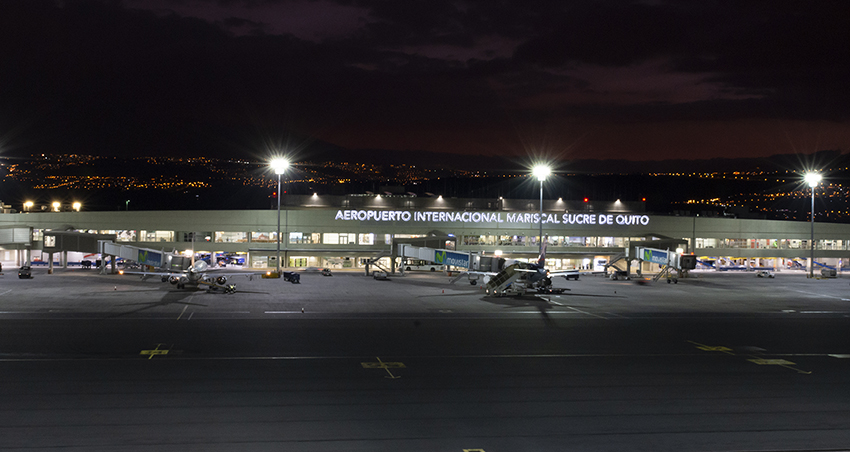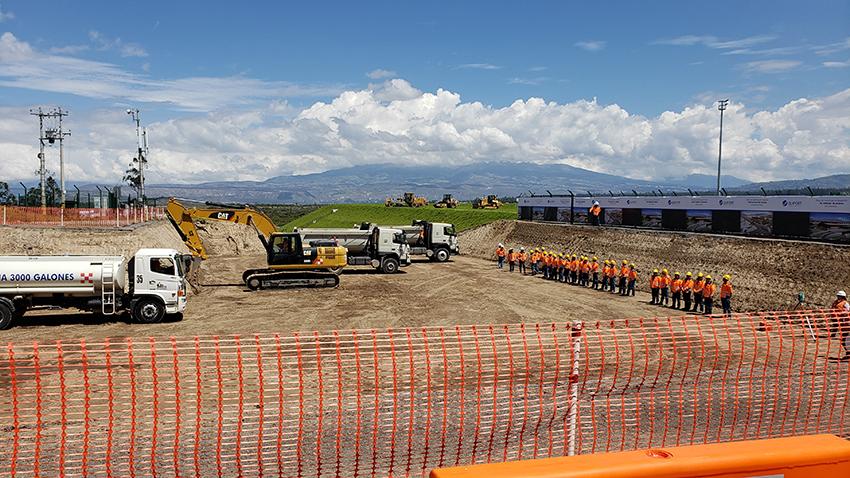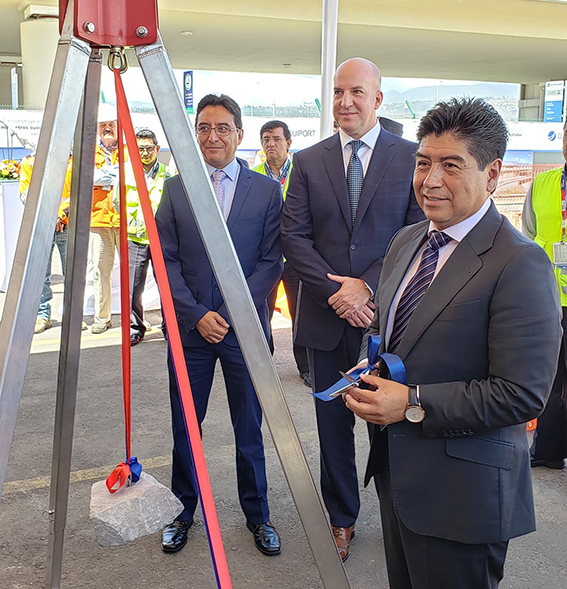Month: November 2019
QUITO AIRPORT IS THE FIRST IN ECUADOR TO BE CERTIFIED FOR ILS CATEGORY II OPERATIONS IN LOW VISIBILITY

This system helps to reduce cancellations, delays or diversions due to fog, increasing capacity at the airport to high international safety standards.
Since 2013, the Civil Aviation Authority (DGAC) has worked with Corporación Quiport to implement air navigation aids. To this end, equipment and systems have been installed such as the ILS (Instrumental Landing System), RVR (Runway Visual Range) and runway centerline lighting, all to increase the operational availability of the capital’s airport in foggy or low visibility conditions. These measures have led to Quito Airport becoming the first in Ecuador to be certified in ILS Category II.
The ILS is an approach and landing aid, which is used globally to guide aircraft with precision during their approach to the runway and, in some cases, along it. This system has 3 categories of operation and is established by the International Civil Aviation Organization (ICAO).
At Quito Airport, runway 36 currently has Category II precision approach and runway 18 has Category I precision approach. Because of this, the Civil Aviation Authority has certified the approach procedures and the Quito International Airport Aerodrome Manual and has authorized operations in adverse weather conditions (severe fog).
The Civil Aviation Authority states that Category II approaches allow aircraft to land at a decision altitude of 100 feet (30.48 meters) and visibility of just 1,200 feet (350 meters). This benefits passengers and airlines by preventing delays, diversions or cancellations due to fog. “CAT II guarantees that Mariscal Sucre Airport has a first-rate infrastructure, placing it at the forefront of international airports” says Anyelo Acosta, Director General of Civil Aviation.
Andrew O´Brian, President and CEO of Corporación Quiport, indicates “to be pleased to have ILS CAT II at Mariscal Sucre Airport, the first airport in the country and one of the first in Latin America to achieve this. This means 99% effectiveness and a high level of safety at the airport, a goal we have had since 2013 ”. He adds that in order to comply with all the technical requirements of this certification, intense work has been carried out with the technicians of Quiport and DGAC; contributing to the development of air transport in Ecuador and making the airport a platform for quality at a national and international level.

Lastly, Pablo Galindo, Undersecretary of Air Transport at the Ministry of Transport and Public Works, says that the certification is a clear and strong signal that will attract other airlines to Ecuador. He emphasizes that the certification is the result of joint work by the private company and the public sector who have become strategic partners for tourism investment and connectivity in Ecuador.
QUIPORT BEGINS THE PASSENGER TERMINAL EXPANSION AT MARISCAL SUCRE AIRPORT

From 2019 to 2020, Corporación Quiport, concessionaire of the airport service, will execute the project to expand the passenger terminal and apron, with an investment of US$ 60 million.
In 2020 the terminal will increase by 35%, with an additional 6 self-service check-in kiosks and a 32% increase in the check-in area to improve the travel experience for passengers. The expansion of the boarding area will increase capacity by 19% in the boarding lounges, thanks to an additional 3,200 m2. The passenger apron will increase by 24,214 m2 with 2 extra parking positions for aircraft.

The work which began yesterday is part of the master plan for airport development approved by the Municipality of Quito, which counts on collaboration and joint work with the Civil Aviation Authority and the Ministry of Transport and Public Works.
For Andrew O’Brian, President and CEO of Corporación Quiport “all the actions carried out by the concessionaire are focused on the economic, social and tourism development of Quito and the country”. He adds that the 13-month construction process will create around 2,700 direct, indirect and induced jobs. He explains that Quiport aims to provide a unique experience to its passengers and a sense of belonging for Ecuadorians.
In the passenger area, the design, materials and colors aim to create a greater sense of belonging with the city. The areas for check-in, immigration and screening at departures and arrivals, baggage claim hall and customs will be expanded to offer greater comfort and efficiency.
The new space in the departures area will have services including free Wi-Fi, many power outlets, leading retail stores, restaurants with new national and international gastronomic options and a more practical play area for children.
“All of this will help to achieve the Wow! factor we want for our passengers and users”, says Andrew O’Brian.
Sandro Ruiz, General Manager of Empresa Pública Metropolitana de Servicios Aeroportuarios, congratulated the teamwork being performed for the benefit of Quito, its development and growth. “We are convinced that we must continue to focus on connectivity, tourism and productive development, and these types of projects and initiatives are key to delivering a legacy of quality for future generations”.
Jorge Yunda, Mayor of Quito, remarks on the positive influence that Mariscal Sucre Airport has had on various productive activities in the city, and he emphasizes the need to continue to focus combined efforts on connectivity and to support the actions of the airport. “This is why I am interested in supporting Quiport and encouraging our airport to keep growing and creating more services for the people”.
The works will involve prestigious local contractors such as Adriana Hoyos Design Studio, Tracto repuestos, Irigoyen, Ecuatest, Prestop, and international contractors including Stantec, Jetway and Smiths Detection.
The expansion project will be executed with the highest standards of service and quality, a reflection of the airport service which will continue to provide a unique experience to passengers. This way, Corporación Quiport reaffirms its commitment to offer infrastructure that will meet the country’s requirements for growth.
